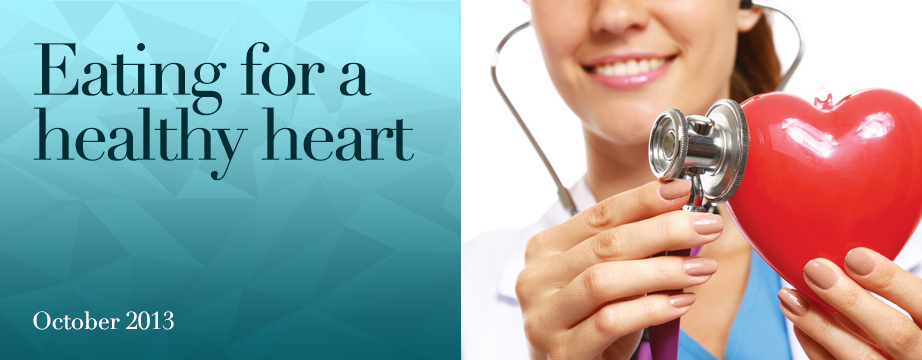
| “Let food be thy medicine.” – hippocrates. You are what you eat. That’s the simple truth. Heart health should start with what food we put into our bodies. If we put in toxins, then we get poisoned. If we put in top quality fuel, then we can expect to keep the engine running smoothly and in top condition for years to come. Ever wondered why there are certain communities in the world where life expectancies outstrip other parts of the world? (Think Okinawa community in Japan and Loma Linda community in california, USA.) |
| What foods help to keep the heart healthy? Let’s separate the hype from the truth. |
| 1. does eating eggs Lead to heart disease? |
| The egg yolk of a large egg contains about 185 mg of cholesterol, according to latest figures from the USDA. While it is true that blood levels of cholesterol have a direct relationship to the risk of heart disease, blood levels are not directly related to the cholesterol content of the foods we eat. In fact, it is the type of fat in the diet that is more important in raising the bad (LDL) cholesterol that contributes to heart disease. Eating high amounts of trans fats raise LDL whereas monounsaturated fats like olives, nuts and avocadoes and certain types of saturated fats like coconut oil, and polyunsaturated fats of marine origin like fish oils lower the LDL. Back to the egg story. Egg yolks also contain high Levels of vitamins B12, D and folate that help protect against heart disease and vitamin A and E that are potent antioxidants. Current evidence suggest that eating one whole egg a day will not do any harm. In addition, eating an egg (which is a good source of protein) for breakfast helps to make one feel fuller and less likely to overeat for the rest of the morning. |
| 2. does eating chocoLate protect against heart disease? |
| Yes and no. |
| The active ingredient in chocolate that has been shown to protect against heart disease is in the cacao bean from which cocoa powder is derived. Raw cocoa powder contains flavonoids called flavan-3 ols which protect against heart disease. Not all cocoa is created equal. Processing by alkalinization (Dutch method) removes the flavan-3 ols which gives it the bitter taste and improves the taste but removes the benefits. The higher the cacao content, the higher the flavan-3 ol content. Dark chocolate is chocolate that contains more than 60% cacao. White chocolate has no cacao and contains only butter fat and sugar! There is evidence that chocolate consumption lowers blood pressure and incidence of stroke and heart disease. How much chocolate should one eat? Because chocolate is calorie dense, and a high calorie diet leads to weight gain and diabetes, we have to proceed with caution. 50g of chocolate a day contains 10 g of fat and 230 calories, which easily adds to more than 10 percent of daily caloric requirements for some. Therefore, my motto is, enjoy chocolate, as an indulgence, choose dark over milk chocolate, knowing its health benefits, but limit yourself to no more than two to three small squares at any one time. |
| 3. WiLL drinking red Wine protect my heart? |
| Yes, but provided it does not give you palpitations or hives as it sometimes does to me. |
| Red wine contains a mixture of almost 500 polyphenols, compounds that have been shown in animals and humans to reduce inflammation, cholesterol, clot formation, oxidation and atherosclerosis. It is not the ethanol in the wine but the polyphenols that gives protection. Drinking beer or gin does not confer the same benefits as red wine. Drinking dealcoholized wine like red grape juice with the skins preserves the polyphenols and retains its anti inflammatory benefits. However the amount of polyphenols can vary greatly between the species of grape, the region where it is grown as well as the year the wine was produced. How much does one need to drink? One to two glasses of a red wine (280 ml) containing 500-1000 mg of polyphenols. For those who don’t like to drink alcohol, does taking a capsule containing polyphenols instead of drinking the wine have the same effects? Perhaps, but wine drinkers will argue that that takes the enjoyment out of a good glass of red wine! |
| 4. What is the Mediterranean diet? |
| The Mediterranean diet is a diet that is low in calories overall, high in fibre and vegetables, high in nuts and olive oil, low in dairy and other saturated animal fats and high in alpha linoleic acid ALA(plant source of omega 3 fatty acids) and eicosapentanoic acid EPA and docosahexanoic acid DHA (marine sources of omega 3 fatty acids) with moderate consumption of wine. |
| Several studies have shown that people who eat such a diet have lower death rates from heart attacks and strokes. |
| People from Mediterranean countries also eat their food slowly, and interact socially during mealtimes, in a relaxed atmosphere. These are believed to be important factors as well. |
| 5. Which is better? LoW fat or LoW carb? |
| Obesity is due to excessive consumption of calories. Because fat is high in calories, fat has been implicated in the case against obesity for far too long. As I have mentioned earlier, not all fats are bad. Fats are an important constituent of cell membranes and brain and nerve tissue contain high amounts of fat necessary for electrical impulse conduction. Omega 3 fatty acids have antiinflammatory, anticholesterol and antiarrhythmic effects. Olive oil contains polyphenols that also have antiinflammatory, anticholesterol, antioxidative effects. Coconut oil, which contains lauric acid, a saturated acid, has the same effects. Fats derived from nuts and avocadoes are monounsaturated and are healthy fats. Furthermore there is accumulating evidence that dietary fat may have no effect on death rates from heart and stroke. |
| Excessive carbohydrate consumption leads to storage as body fat, obesity and insulin resistance (diabetes) which are risk factors for heart disease and stroke. The anti-fat campaign led to the food industry creating alternatives to foods that normally have high fat content. But in order to make these foods taste good, industry substituted the fat with sugar and salt. High intakes of salt and sugar lead to hypertension, obesity and diabetes, all risk factors for cardiovascular disease. So instead of making people thinner, this led to people becoming fatter as they were consuming more quantities of this supposedly “healthier food option”. |
| So before you reach for that low fat yoghurt on the shelf next time, read the nutritional label and check how much more sugar it contains than the regular variety. While we are on the subject of labels, always read the list of ingredients of anything you buy. If it lists partially hydrogenated or hydrogenated fats as any of its ingredients, stay away from it. That is just another term for trans fats. “Extra virgin†or “cold pressed” refers to the process of obtaining the oil, without heat, so that hydrogenation does not take place, hence the higher price for these types of oils. |
| 6. are aLL carbs bad? |
| There are refined carbs such as cane sugar, white flour and white rice and there are unrefined carbs such as unpolished rice, whole wheat flour, root vegetables like carrots, pumpkins, potatoes and sweet potatoes. Refined carbs have vitamins, fibre and minerals stripped off in the process and have no nutritional value other than carbohydrates. Refined carbohydrates have a high glycemic index, which means that the carbohydrate, once digested into simple sugars (glucose) is rapidly absorbed into the blood stream. Such a spike in blood glucose stimulates insulin release, which triggers storage of excess glucose as fat. Complex carbs have a low glycemic index, allowing slower absorption and a chance for the glucose to be utilized by the body for energy and not stored. Having said that, any excess of any carbs is bad, complex or refined. Therefore, control the amount of carbs in your diet, and when given a choice, choose complex over simple carbs. |
| Space does not allow me to cover all aspects of nutrition and heart health here but let me leave you a recipe for an anti-oxidant packed breakfast recipe for Fruity Muesli. |
| an antioXidant – packed recipe for frUity mUesLi |
Combine these four ingredients and soak overnight in refrigerator. Next morning add:
Mix well and enjoy! |
 DR RUTH KAM
DR RUTH KAMCardiologist
MBBS (Singapore)
MRCP (Int Med) (UK)
M Med (Int Med) (Singapore),
FAMS (Cardiology), FRCP (Edin)
Ruth Kam Heart and Arrhythmia Clinic
1 Farrer Park Station Road, #07-11 Connexion
Farrer Park Medical Centre, Singapore 217562
Tel: 6443 0468
www.arrhythmia.com.sg
1 Farrer Park Station Road, #07-11 Connexion
Farrer Park Medical Centre, Singapore 217562
Tel: 6443 0468
www.arrhythmia.com.sg



